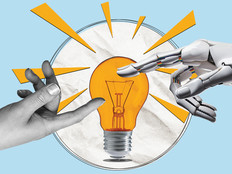How Students Can Use Technology to Learn About Business Sustainability
Lesson Description
Sciracy — a neologism that blends science and literacy — aims to promote the knowledge and understanding of scientific concepts and processes required for personal decision-making, participation in civic and cultural affairs, and economic productivity.
This activity, a Sciracy project, teaches students to ask and answer questions derived from curiosity about everyday experiences, and to articulate their thoughts about the world around them.
The subject of this project is business sustainability, which Financial Times defines as the process "by which companies manage their financial, social and environmental risks, obligations and opportunities."
Begin with a class discussion of the project's goals, purpose and impact. Then, divide students into teams and have them research sustainability practices in business. Students can do this online or arrange to interview local large-business owners about the practices they employ in areas such as transportation, purchasing and utilities. Students should use what they learn to develop a checklist of best practices using Microsoft Office. Examples might include regular tune-ups and tire pressure checks for business vehicles or using marketing materials that require no envelope.
Teams should decide as a class how to share their knowledge with local small-business owners. Our students decided to build a wiki to "house" their learning and to use Microsoft Publisher to create informational brochures and flyers with Microsoft Tag barcodes that would draw viewers to their wiki.
Next, organize a field trip to area businesses so students can share their learning. Use Bing Maps to assign locations and equip each team with video and digital cameras so they can record their visits.
Upon entering each business, students should introduce themselves and outline their project aims. They should then use their checklists to assess how sustainable each business is and their publications to educate the owner about small changes that could improve its sustainability rating and the economic benefits of doing so.
Once back in the classroom, have students develop a rubric for rating the businesses, decide how to illustrate the ratings and apply the rubric to the data gathered during their field trip. Such findings should be posted to their wiki pages. Students also should develop a rubric to assess the pages that each team creates. Students can further enliven their wiki pages by using Microsoft Photosynth and Movie Maker to create 3D models and movies that will give visitors a more interactive look at the businesses studied.
Conclude the project with a wiki launch party, and invite local business owners and parents to attend.
Subject Area
This project was designed for fifth- and sixth-grade students with the intent of creating interdisciplinary learning opportunities in the subjects of science and literacy.
Grading Rubric
Students should be graded on their individual and team contributions. Wiki pages should be judged on their content, clarity and design.
Teaching Tips
- Encourage students to consider a wide variety of tools that would allow them to be effective agents of change.
- Work with students to develop rubrics that clearly indicate their roles and responsibilities — both as individuals and as a team.
- Ensure that students collect accurate contact information on the field trip so that the connections they make with business owners can be nurtured into meaningful relationships.










